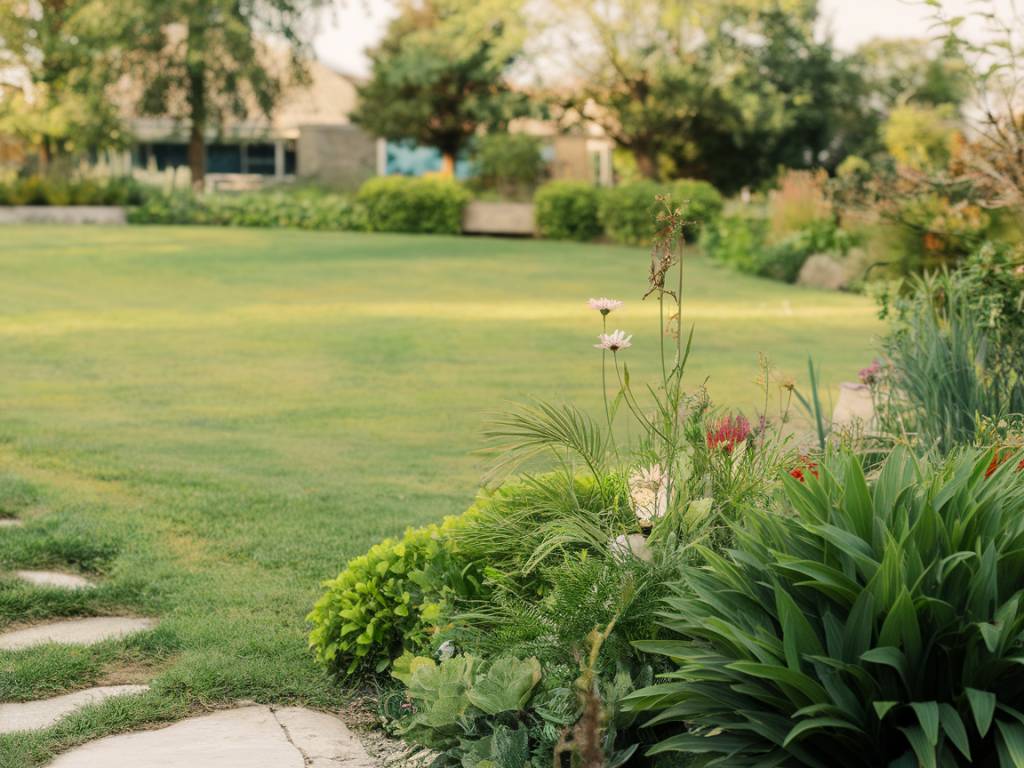Maintaining a lush, green lawn year-round requires a combination of proper techniques, practices, and products. Whether you are a new homeowner or have years of lawn care experience, grasping the fundamentals can make all the difference. With the right approach, you can keep your lawn healthy and vibrant through every season. In this article, we’ll explore the best techniques for maintaining a healthy lawn throughout the year, ensuring you’re well-equipped to tackle any challenges that come your way.
Understanding Your Lawn’s Needs
Before diving into specific techniques, it’s essential to understand what your lawn needs. Grass, like any other plant, requires a balanced combination of sunlight, water, and nutrients. Different types of grass have varying requirements, so identifying the specific grass type in your lawn is the first crucial step. Common grass types include Bermuda, Kentucky Bluegrass, Fescue, and Zoysia, each with unique characteristics and care needs.
Soil Testing and Preparation
A healthy lawn starts with healthy soil. Soil testing is a critical step to understanding the nutrient levels, pH balance, and composition of your soil. Conducting a soil test once a year can provide valuable insights into what your lawn may be lacking. Many local extension services offer soil testing kits and analysis.
Based on the results of your soil test, you can take specific actions to improve your soil’s health. For example, if your soil is too acidic, you can add lime to increase the pH. Conversely, if your soil is too alkaline, sulfur can be added to lower the pH. Aeration, the process of poking small holes in the soil, can also significantly improve soil health by allowing water, air, and nutrients to penetrate deeper.
Proper Mowing Techniques
Mowing plays a vital role in lawn care. Cutting the grass too short or using a dull blade can stress the grass and lead to various problems. Here are some key mowing techniques to keep in mind:
- Maintain Proper Height: Different grass types have different ideal mowing heights. For instance, Bermuda grass should be kept at about 1-1.5 inches, while Fescue prefers a height of 2.5-3.5 inches. Always aim to keep your grass within these recommended ranges.
- Regular Mowing: Regular mowing encourages healthier growth. However, avoid removing more than one-third of the grass blade in a single mowing session to prevent stress on the plants.
- Sharp Blades: Ensure your mower blade is sharp. A dull blade tears the grass rather than cutting it, leading to a ragged appearance and making the grass more susceptible to diseases and pests.
- Varied Patterns: Changing your mowing pattern each time helps prevent soil compaction and encourages more even growth.
Effective Watering Practices
Watering is a fundamental aspect of lawn care, but it’s not as simple as just turning on the sprinkler. Proper watering techniques can prevent issues such as fungus growth and root rot. Here are some guidelines:
- Deep and Infrequent Watering: Water your lawn deeply and less frequently to encourage deep root growth. This practice helps grass become more drought-resistant.
- Time of Day: Water your lawn early in the morning. This ensures that the water has time to soak in before the heat of the day causes it to evaporate. Avoid watering in the evening as prolonged moisture can lead to fungal diseases.
- Amount of Water: Most lawns require about 1 to 1.5 inches of water per week. Use a rain gauge or a straight-sided can to measure the amount of water your lawn is receiving.
- Adjust Based on Weather: During periods of heavy rainfall, reduce your watering schedule to prevent overwatering and potential issues related to too much moisture.
Fertilization Strategies
Fertilization provides the necessary nutrients that grass needs to thrive. A balanced fertilization schedule can significantly impact the health and appearance of your lawn. Here are some tips for effective fertilization:
- Type of Fertilizer: Use a balanced, slow-release fertilizer that contains nitrogen, phosphorus, and potassium. These are the primary nutrients grass needs for healthy growth.
- Frequency: Fertilize your lawn based on the type of grass. Cool-season grasses typically require fertilization in the fall and spring, while warm-season grasses benefit from applications in late spring and summer.
- Application: Follow the manufacturer’s instructions for application rates and timing. Over-fertilizing can burn the grass and cause more harm than good.
- Organic Options: Consider using organic fertilizers, which can improve soil health and reduce the risk of chemical buildup in your lawn.
Weed and Pest Management
Weeds and pests can quickly undermine your efforts to maintain a healthy lawn. Effective management strategies can help keep these invaders at bay.
- Weed Control: Regularly inspect your lawn for weeds and promptly remove them. Use pre-emergent herbicides in the spring to prevent weed seeds from germinating. Post-emergent herbicides can be used to target existing weeds.
- Pest Control: Monitor your lawn for signs of pests such as grubs, chinch bugs, and armyworms. Use appropriate insecticides or biological controls as needed to mitigate infestations.
- Healthy Lawn as Prevention: A thick, healthy lawn is the best defense against weeds and pests. Proper mowing, watering, and fertilization can help create an environment that is less hospitable to these issues.
Dealing with Seasonal Changes
Seasonal changes bring different challenges and opportunities for lawn care. Here’s how to adjust your approach throughout the year:
- Spring: Perform a thorough cleanup to remove debris and dead grass. Aerate and fertilize your lawn to encourage new growth. Start your regular mowing and watering schedule.
- Summer: Focus on consistent watering, as heat can stress the grass. Mow at a slightly higher height to provide shade for the soil and reduce water evaporation.
- Fall: Aerate and overseed cool-season lawns to promote dense growth. Apply a fall fertilizer to support root development. Continue mowing and watering as needed.
- Winter: For warm-season grasses, reduce mowing frequency and water less. Cool-season grasses may still need occasional watering if there’s a lack of rainfall. Clear any leaves or debris to prevent fungal issues.
Using Mulch and Compost
Mulching and composting are excellent practices for maintaining soil health and reducing the need for chemical fertilizers. Here are the benefits and techniques:
- Mulching: Mulch helps retain soil moisture, suppress weeds, and regulate soil temperature. Use organic mulches, such as grass clippings, shredded leaves, or pine straw. Apply a layer of mulch around garden beds and trees, avoiding direct contact with plant stems.
- Composting: Composting yard waste and kitchen scraps generates nutrient-rich compost that can be added to your lawn. Apply compost in a thin layer over your lawn to improve soil structure and provide essential nutrients.
Utilizing Lawn Care Products
In addition to natural techniques, various lawn care products can support your efforts in maintaining a healthy lawn. Some valuable products include:
- Lawn Fertilizers: Available in both synthetic and organic formulations, these products provide essential nutrients to your grass.
- Herbicides: Pre-emergent and post-emergent herbicides help control weeds throughout the growing season.
- Insecticides: Used to manage pest infestations, these products come in chemical and organic varieties.
- Lawn Sprinklers and Irrigation Systems: Efficient watering systems ensure your lawn receives the necessary hydration without wasting water.
- Aerators: Manual or mechanical aerators help improve soil compaction and promote healthy root growth.
- Seed and Sod: Quality grass seed and sod can help repair damaged areas or establish a new lawn.
Hiring a Professional Lawn Care Service
If maintaining your lawn year-round feels overwhelming, consider hiring a professional lawn care service. Professionals can provide expert advice, perform necessary treatments, and ensure your lawn remains in top condition. Look for services that offer customized care plans tailored to your lawn’s specific needs.
By implementing these best techniques for keeping your lawn healthy year-round, you can enjoy a beautiful and vibrant outdoor space. Remember, consistency and attention to detail are key. Regular maintenance and adapting to seasonal changes will help you achieve a lawn that is the envy of the neighborhood.






